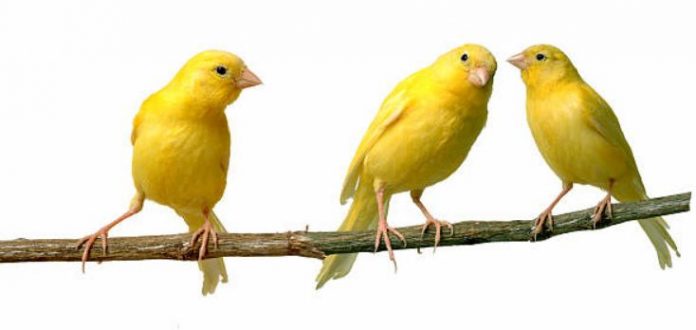The canary originated in the Canary Islands, which were not named for the bird, but for the large fierce dogs kept by the local people.
“Insula Canaria” is Latin for “island of the dogs” and over time the name became Anglicized to its current name, The Canary Islands.
A small local grayish green finch with a touch of yellow on its breast was given the name Canary after these islands.
The males of this breed of finch had a wonderful song, prompting some of the locals to capture them and put them in cages in their homes.
European travelers visiting these islands heard the songs of these birds and demanded that the local people catch them and sell them as cage birds.
From the early fifteen hundreds onward, hundreds of thousands of these birds were exported to Europe; because of the popularity of these birds, European entrepreneurs began breeding them locally.
Through selective breeding and cross-breeding them with local and imported finches, this drab finch was slowly changed into the canaries of today. For many years canaries were bred as either song canaries or type canaries (bred for appearance).
“Type” canaries were primarily developed in Great Britain that went in for exhibiting their birds in national expositions.
The London Fancy, the Norwich, the Yorkshire, the Lizard, and the Manchester Coppy are a few of these “type” canaries that were developed in Great Britain.
Meanwhile, in Germany canaries were bred for the song. If you have ever heard a German Roller canary sing, it is a truly magnificent sound.
Not only did the Germans keep the best singers for breeding stock, but they also trained the offspring on how to sing by placing the young birds in a room with a great singer.
In this way, the youngsters would try and imitate the song and voice of the great singer. This resulted in a breed of bird that probably has the greatest song of any bird in the world.
The pet canary sold in pet stores today is a mixed breed with an unknown bloodline. Usually, it has some Roller or American Singer genes mixed with a colorful “type” bloodline.
The resulting bird is and averages to good singer with a colorful appearance. Frequently these birds come from a local “backyard” aviary.
In this way, they do not suffer from the stress of a long journey from the breeder to the seller. In addition, the birds are more acclimatized to the area where they are purchased.
Some of these birds have smooth feathered heads like that of the Roller canary or the “traditional” canary and some have the Gloster Corona or crested head which makes them look like Moe of the comedy troupe “The Three Stooges.”
While canary clubs and competitions still exist in various parts of the world, they are not as popular as they were fifty to one hundred years ago when nearly every city had one or more clubs and yearly competitions.
In spite of this, the canary is still a popular pet. It is relatively inexpensive to purchase, quite easy to care for and, if you pick a good singer, it will give you hours of daily song.
If you want a pretty bird that will sing its heart out for you then you cannot find a better pet than a male canary.
The females are nice, but they cannot sing, as their voice consists of cheeps and chirps. There is one note of caution to keep in mind.
The canaries are very vain birds and if you put a mirror in their cage, they will sit and look at themselves for hours.
The males usually will not sing if a mirror is placed in their cage and there have been numerous incidents of canaries starving to death because they would not leave the bird in the mirror alone long enough to find the food in their cage.
So, if you want an attractive bird that sings is easy to keep and is relatively inexpensive, then get yourself a male canary and put it in a cage with no mirror.
Make sure your vain virtuoso has a birdbath, as canaries love to bathe. Place the cage in an area where there are no drafts and where at least part of the cage is shaded from the sun. Then sit back and let your new pet serenade you.

